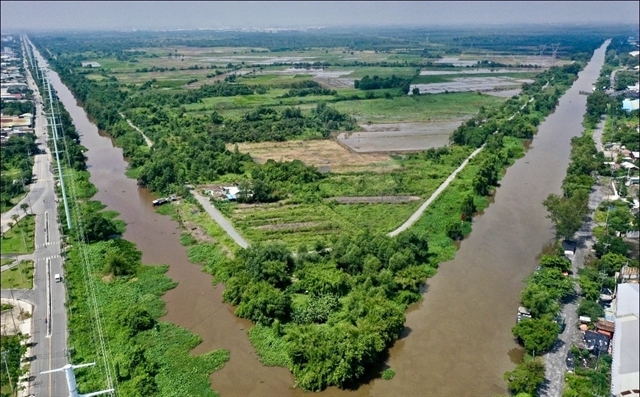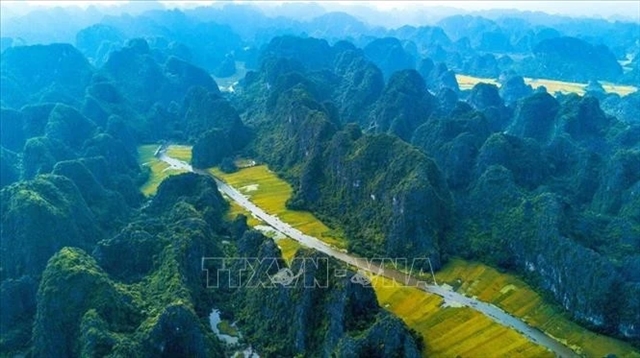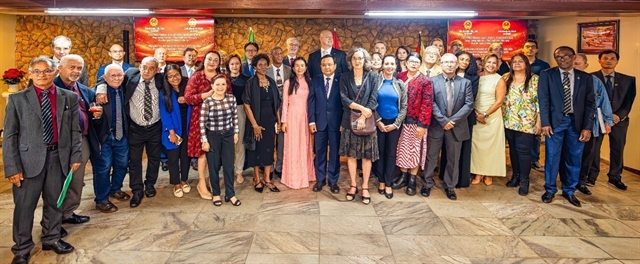 Life & Style
Life & Style


|
| Tam Cốc - Bích Động tourist area in Ninh Bình Province. — VNA/VNS Photo |
HÀ NỘI — As Việt Nam is moving forward with plans to restructure its administrative apparatus, the tourism industry finds itself presented with an unprecedented golden opportunity to forge inter-regional connections as well as drive growth in a new era – that of the nation’s rise.
Phạm Hải Quỳnh, a community tourism expert, envisioned transformative possibilities emerging from merging localities. He stated that the integration of Hà Giang province's majestic landscapes with Tuyên Quang's rich revolutionary heritage could create seamless chains of interconnected experiences that captivate both domestic and international visitors.
When visitors’ demand increases, he said, both localities will gain momentum to upgrade transportation infrastructure, services, and accommodation facilities, stressing tourism development will generate employment opportunities, boost local incomes, and stimulate supporting industries like cuisine and handicrafts, contributing significantly to local economic expansion.
Similarly, the planned connection between Hà Nam, Ninh Bình, and Nam Định provinces could forge an extraordinary cultural and spiritual heritage corridor, expanding northern Việt Nam's tourism landscape. This triangular development area boasts potential to establish a national tourism hub with international reach, he said.
This triangular development zone has the potential to establish a nationally significant tourism hub with international reach.
Experts also acknowledged that tourism connection requires harmonious planning, communications work, and infrastructure investment. One major concern centres on whether famous destinations’ names might become obscured after mergers, potentially damaging tourism brand recognition.
General Secretary of the Vietnam Tourism Association Võ Quốc Trí stressed that what matters more is how tourism brand is repositioned and unique characteristics are preserved.
Building cohesive tourism identities for merged areas presents complex challenges, as each province brings distinct brands and characteristic destinations to the table.
Dr. Trịnh Lê Anh, a lecturer from Faculty of Tourism at the University of Social Sciences and Humanities under the Vietnam National University, Hà Nội, held that the core issue lies in clearly distinguishing between administrative names and destination brands.
Many renowned tourism destinations do not share names with their provinces yet thrive, he noted, citing Sa Pa, Mộc Châu, and Cát Ba as examples. The key lies in maintaining consistent communications strategies, establishing clear legal frameworks, and pursuing long-term development visions that see tourism brands as independent entities.
In the same vein, Oxalis Adventure and Oxalis Holiday CEO Nguyễn Châu Á said that administrative name changes following mergers won't significantly impact current tourism operations. The most important factor for the industry is the appeal of destinations and how they are branded.
Globally recognised destination brands like Sơn Đoòng and Tú Làn caves maintain independent existences separate from administrative factors, he explained. Therefore, if provincial mergers are implemented rationally, they could create opportunities to strengthen connections and expand tourism development spaces.
Associate Professor Dr. Trần Đình Thiên, former Director of the Việt Nam Institute of Economics, believed that localities like Hà Nam, Nam Định, and Ninh Bình, when reorganised, could form a new growth pole, leveraging their combined potential in ecological, historical, and spiritual tourism. However, this requires long-term strategies with businesses playing leading roles in close cooperation with local governments. — VNA/VNS




